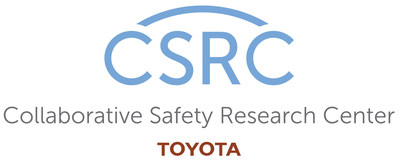Toyota's Collaborative Safety Research Center Expands Latest Phase of Research with New Projects
- Toyota's commitment to safety and mobility technologies is reinforced by the launch of new research projects, showcasing the company's dedication to improving safety in the automotive industry.
- The collaboration with prestigious institutions such as Massachusetts Institute of Technology and University of Michigan Transportation Research Institute enhances the credibility and potential impact of the research projects.
- None.
Insights
Analyzing...
Collaborations with University of Michigan Transportation Research Institute, Touchstone Evaluations, Inc., University of Michigan International Center for Automotive Medicine, and Massachusetts Institute of Technology Center for Transportation and Logistics Agelab
Project expansion reinforces research vision of promoting safety innovations and facilitating a seamless transition to future mobility solutions
Additionally, Toyota announced that it has joined the Vulnerable Road User Injury Prevention Alliance (VIPA) at the University of Michigan International Center for Automotive Medicine (ICAM) to support ongoing research into crashes with shared road-users such as pedestrians, cyclists and e-scooter riders. VIPA seeks to enhance industry-wide understanding of common scenarios between motor vehicles and non-vehicle road users that have historically led to crashes and injuries, with an aim to ultimately contribute to the development of effective mitigation or prevention measures.
Along with the 13 projects announced in 2022, the three new projects are part of the current five-year
"Our new research projects exemplify CSRC's dedication to our mission of improving safety in the automotive industry," said Danil Prokhorov, director of Toyota's CSRC. "By collaborating with researchers to study real-world problems related to mobility technologies, we aim to develop enhanced engineering tools and empower drivers to maximize the potential of advanced technologies."
For the new projects, CSRC is leveraging the expertise of Massachusetts Institute of Technology Agelab, University of Michigan Transportation Research Institute, and Touchstone Evaluations, Inc., respectively. Findings from the research projects will be shared publicly, maximizing the impact of these collaborations to help advance a future safe mobility society.
The three new research projects are:
Research Projects | Collaborator | Objective |
Establishing metrics |
| Researchers will analyze real-world data from
|
Risky driving | University of | Researchers will work to develop prototype
|
Risk profiles and | Touchstone | Researchers will use driving research data to
|
Toyota created the Collaborative Safety Research Center (CSRC) in 2011 to advance mobility safety for industry and society through open collaborations with universities, hospitals and other institutions. With current commitments, to date CSRC has received
The current phase of research 2022 – 2025 at CSRC is focused three key tracks:
- Human-Centric: CSRC strives to help ensure that safe mobility technologies are universally accessible and comprehensible, enabling everyone to benefit from them.
- Safety Assurance: By investigating traffic environment, human drivers and potential safety hazards, CSRC aims to enhance safe operations and mitigate risks associated with mobility technologies.
- Assessment: CSRC focuses on quantifying mobility safety measures to facilitate informed decision-making and drive effective safety strategies.
These new initiatives join CSRC's roster of 98 research projects with more than 30 different institutions. To date, CSRC has published over 275 research papers and engaged more than 300 researchers, who have publicly shared the output globally. The projects have made meaningful contributions to help advance research and technology relating to the safe integration of future mobility solutions for all.
TMNA R&D
For more than 50 years, Toyota Motor North America Research & Development (TMNA R&D) has led engineering for several of the best-selling Toyota vehicles on
CONTACT
Olivia Boisineau
Olivia.boisineau@toyota.com
734-834-0885
![]() View original content to download multimedia:https://www.prnewswire.com/news-releases/toyotas-collaborative-safety-research-center-expands-latest-phase-of-research-with-new-projects-301887091.html
View original content to download multimedia:https://www.prnewswire.com/news-releases/toyotas-collaborative-safety-research-center-expands-latest-phase-of-research-with-new-projects-301887091.html
SOURCE Toyota Motor North America








